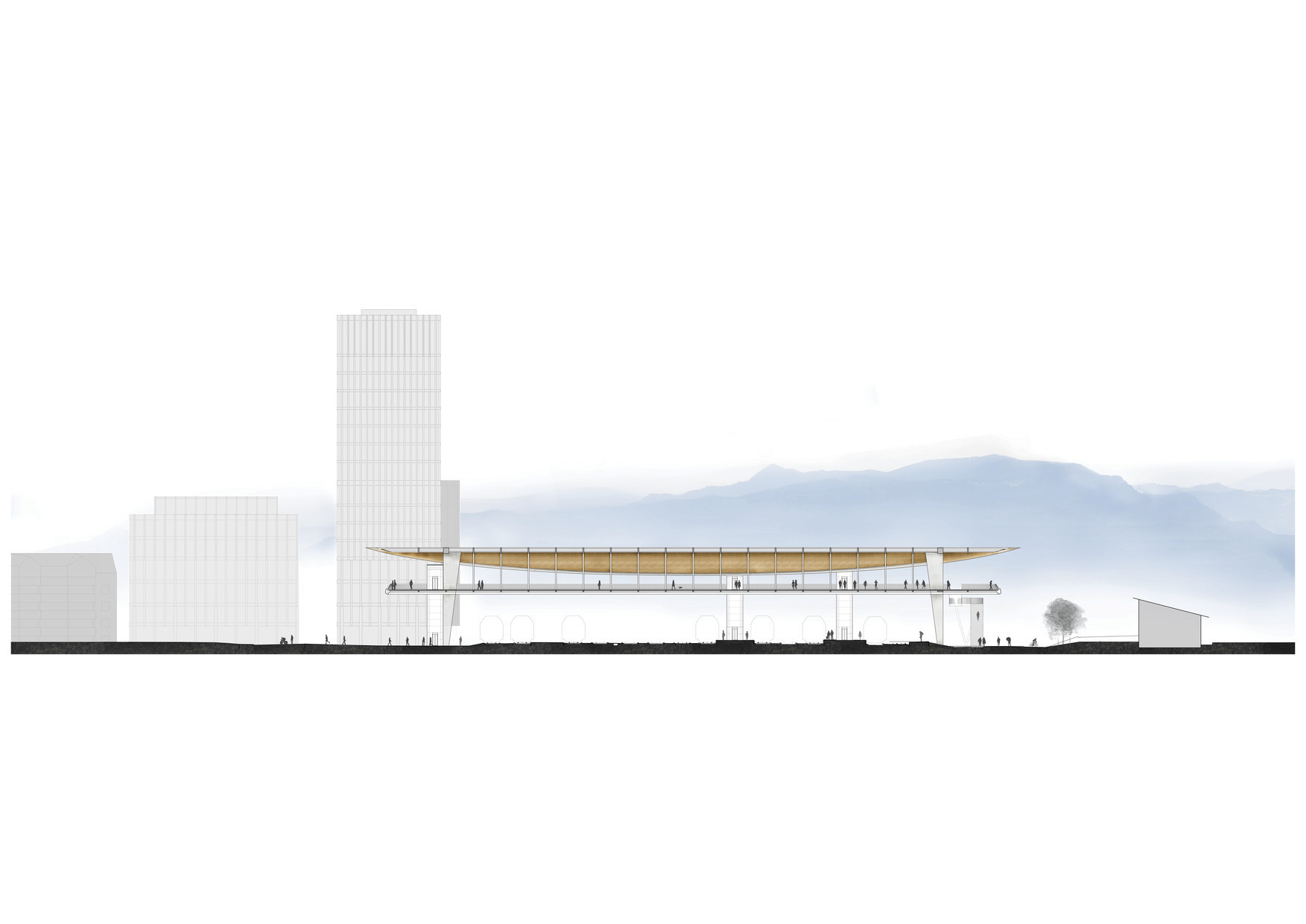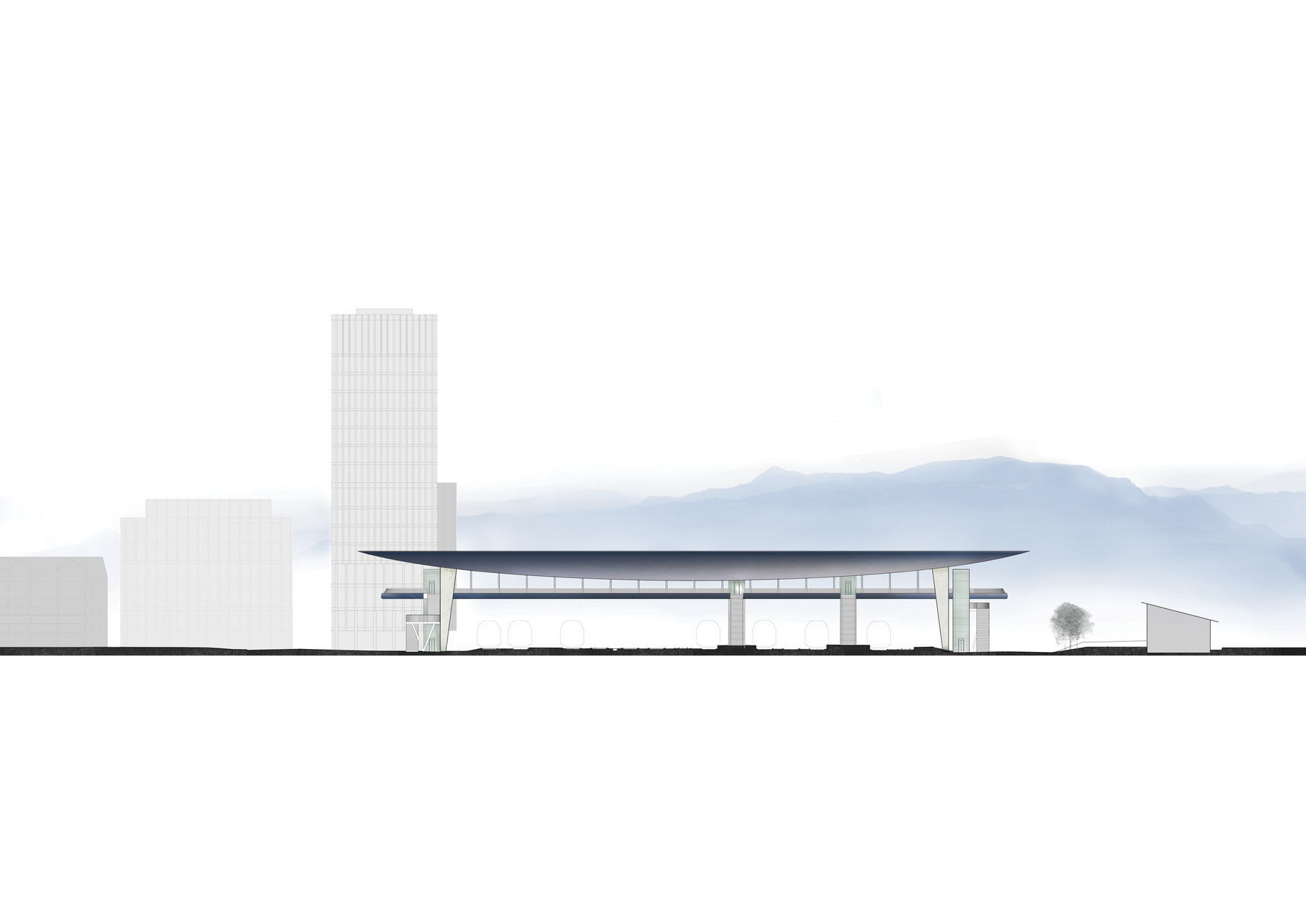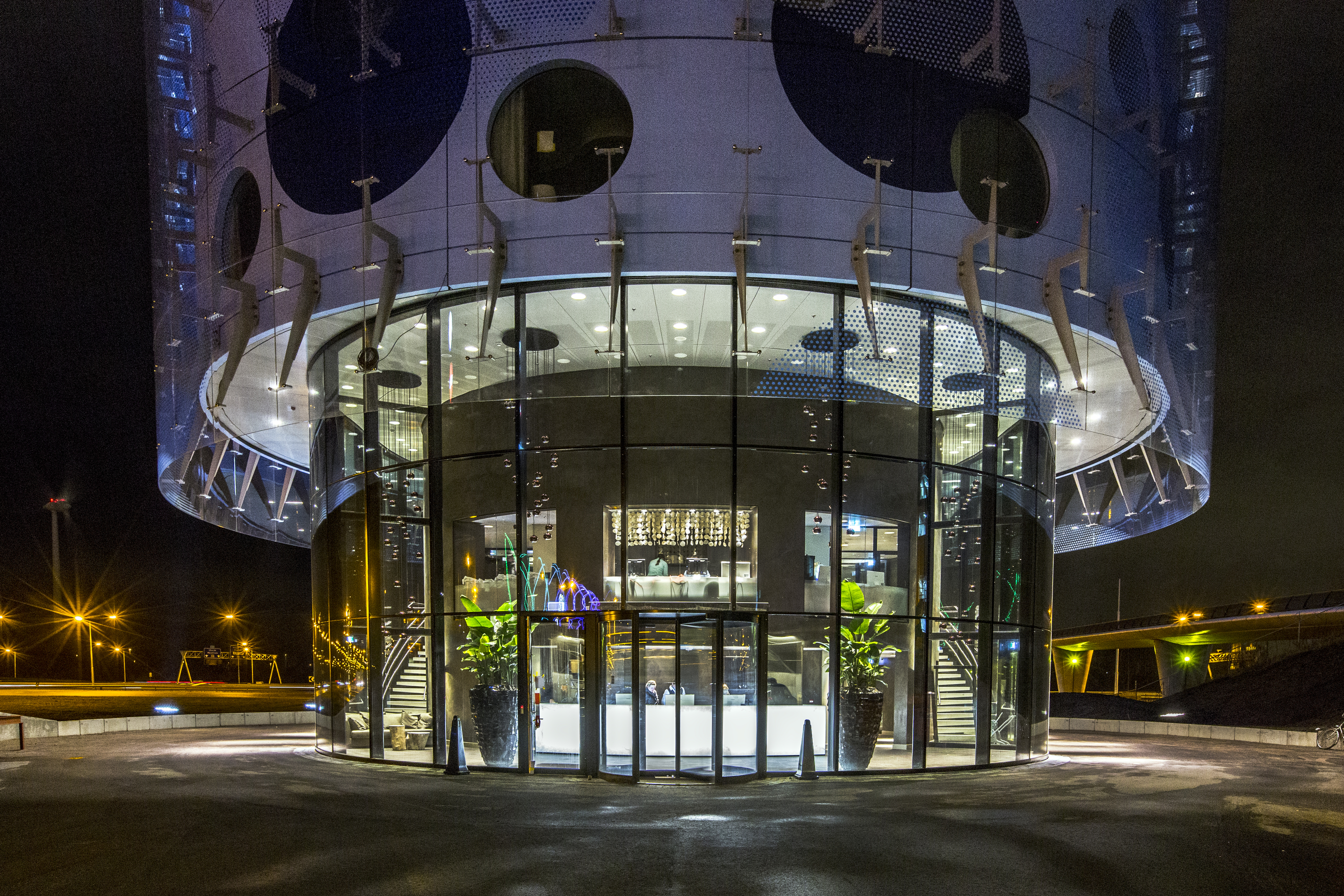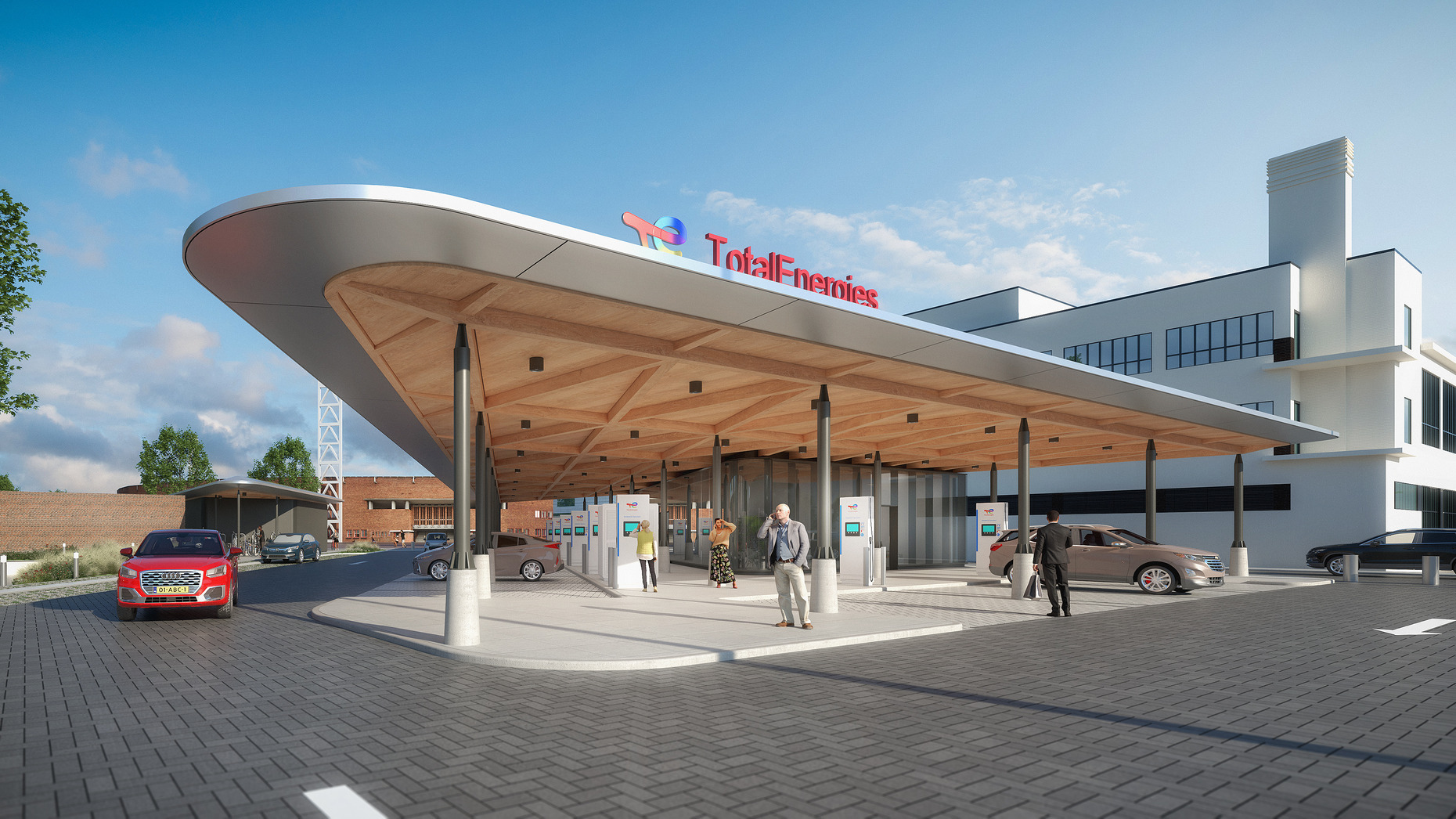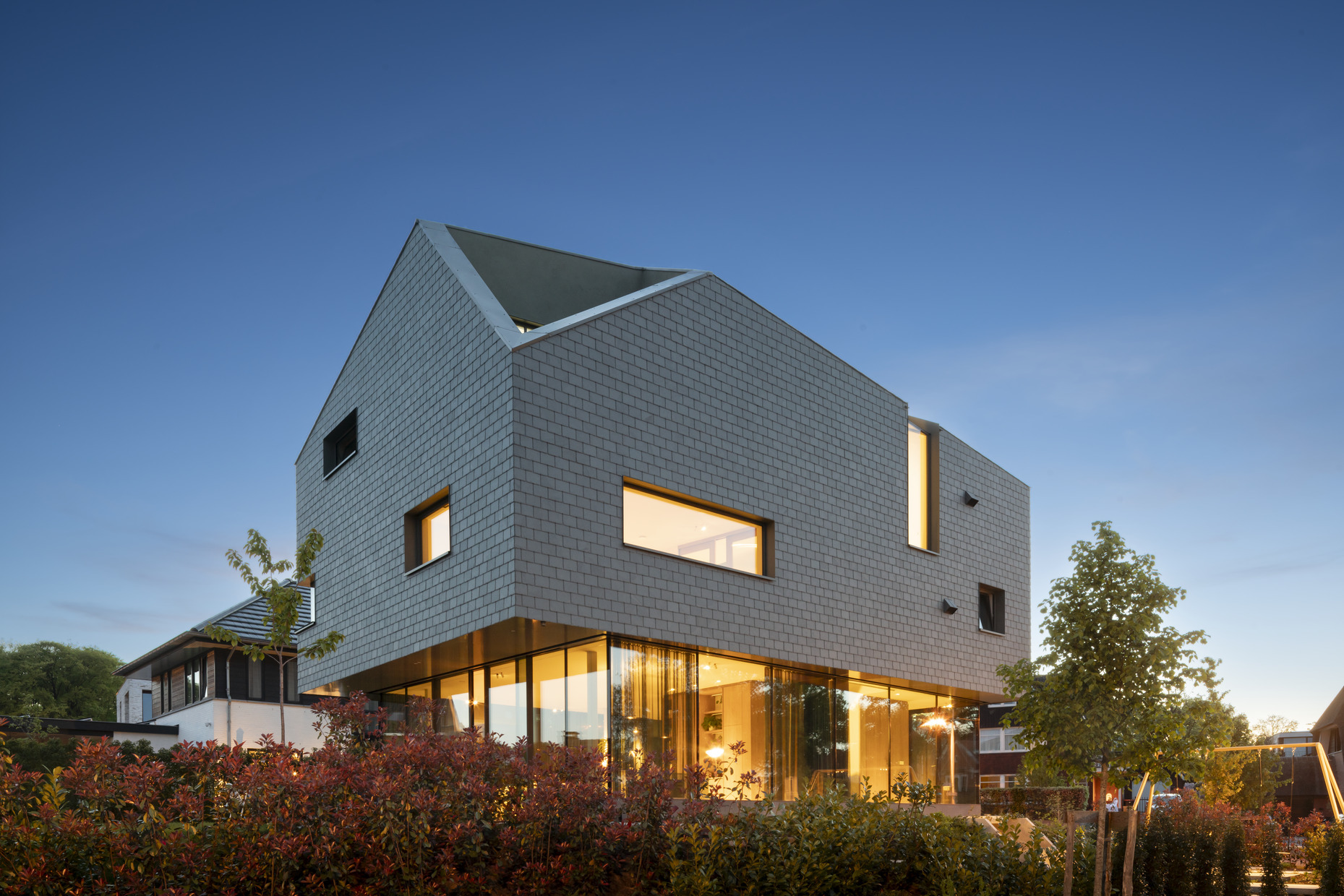Pedestrian bridge – Rotkreuz, Switzerland
More than just a practical link between the northern and southern parts of the area, the Rotrütitor offers Risch-Rotkreuz a new urban space. It plays with the idea of a "gateway" as both a historic and urban transition point in multiple ways.
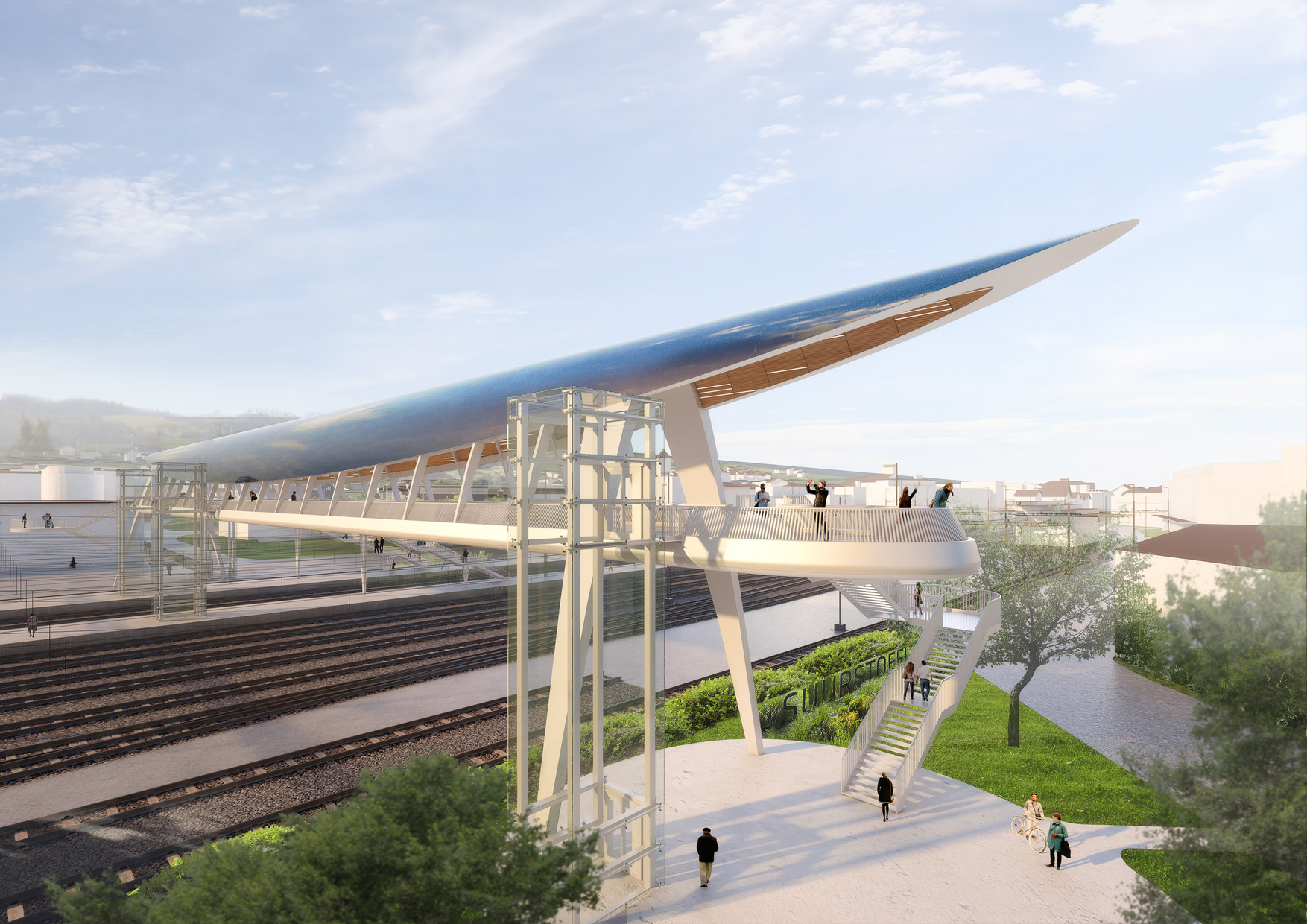
The "Rotrütitor," or Gateway to Rotrüti, presents itself as a unique interpretation of the traditional covered bridge. Its curved roof, finished in a dark blue-grey tone, creates a clear and compact visual identity that is instantly recognizable. The shape of the roof is reminiscent of reeds—the natural feature that gave the historic Rotrüti area its name. In this way, the bridge becomes a symbol for the Risch-Rotkreuz community, and with its elegant design, it reflects the community’s core values: dynamic, forward-looking, and sustainable.
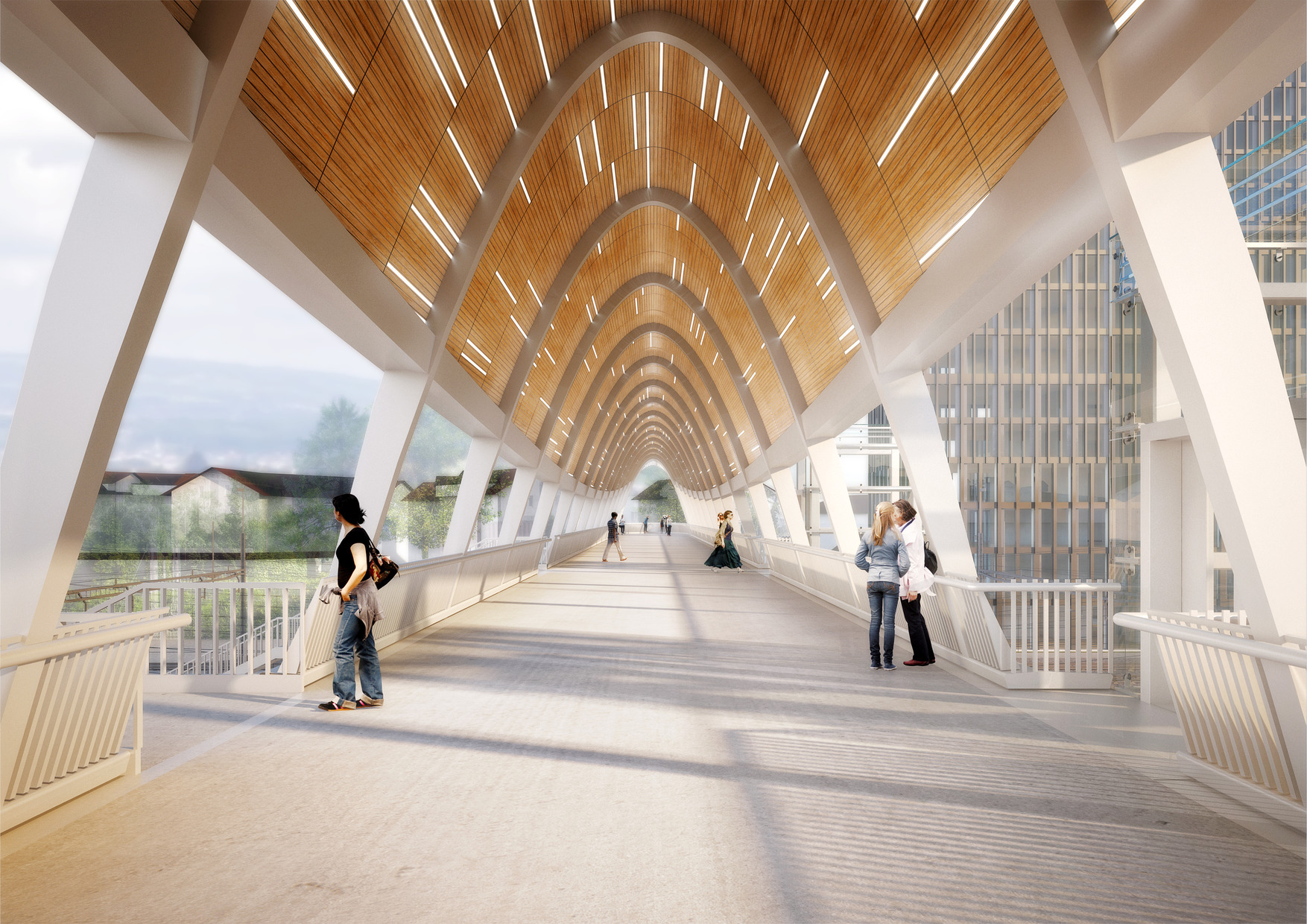
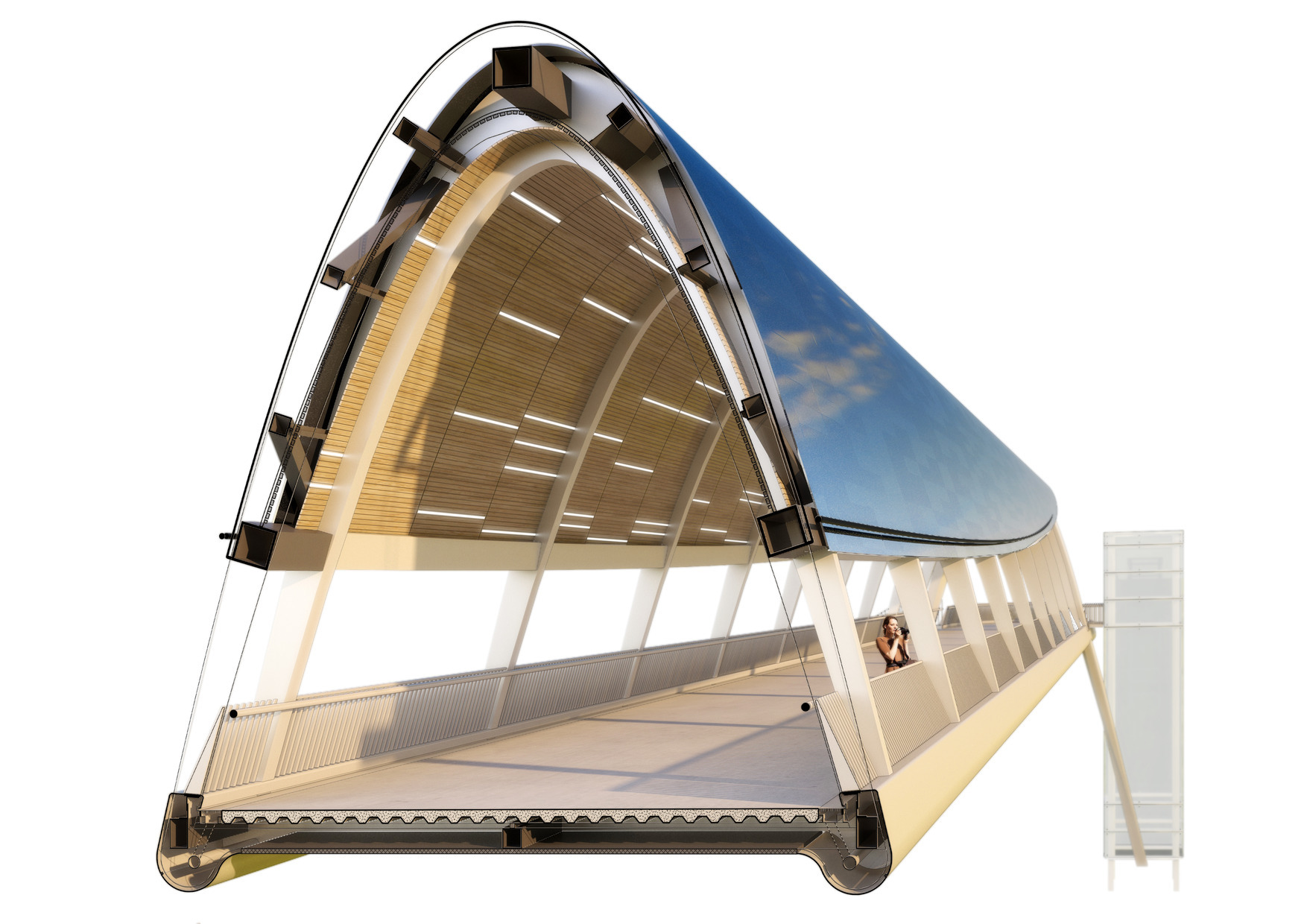
From a distance, especially when viewed from the west, the new pedestrian crossing appears as a welcoming entrance to the Canton train station below and the Central Plateau beyond. For people approaching the bridge from either the north or the south, the structure gives a sense of ceremonial arrival. The rising roofline, supported by a tall, rounded arch, creates a strong sense of transition—from outside to inside, from one urban area to another.
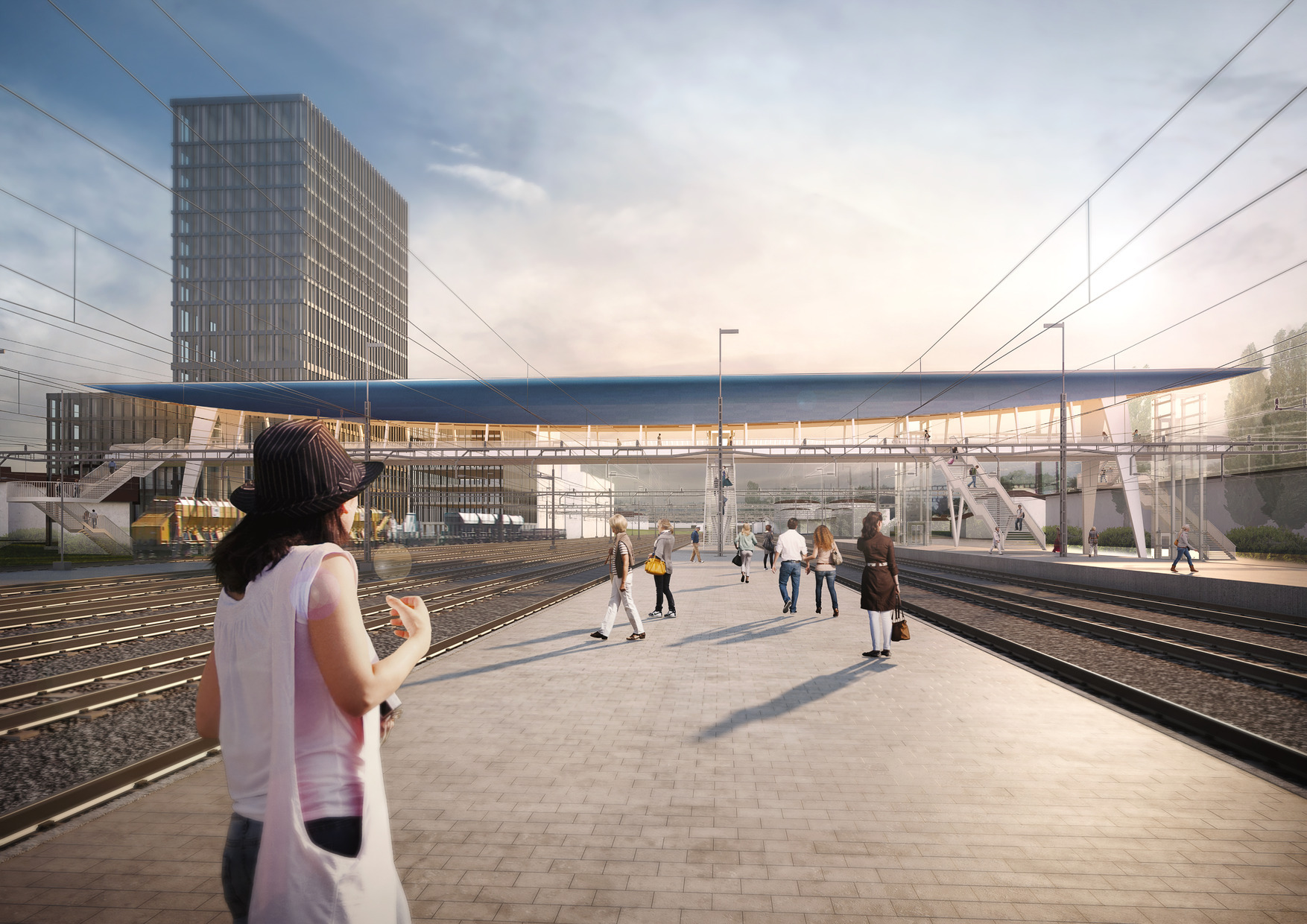
Once on the bridge itself, users experience it as a complete, identity-defining urban space. Its wooden interior, with built-in LED lighting, creates a warm and welcoming atmosphere at all hours of the day and night, offering both safety and a sense of comfort.
